“River stones remain, while water flows away.” Romanian Proverb
Growing up on the farm, our home was surrounded on three sides by hills and a creek that flowed year-round. In the spring we enjoyed the emergence of pollywogs and watched them mature into frogs. In summer we hung ropes over the oaks to swing into the deeper pools. Knowing that winter storms would erode the banks, fall was the time to work in tandem with Mother Nature reinforcing the rock formations to ensure the stability of the land.
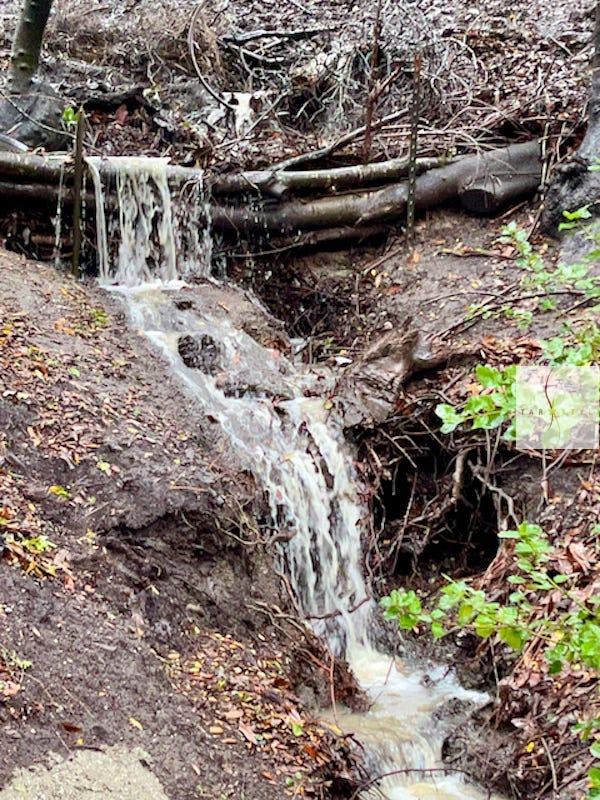
I still live surrounded by hills and creeks. River rocks allow the rainwater to flow smoothly and sustainably during winter months while maintaining appealing dry creek beds in summer. By adding terracing and retaining walls, I’ve managed to reduce hillside run-off.

Recently I visited the garden of Victor R. whose home is backed by a running creek. After removing several decaying pine trees with deep roots that were holding the soil, he realized that his creek needed reinforcement. Rocks and stones are effective ways to buttress the banks of creeks, riverbeds, and hillsides, and Victor utilized them. His rock retaining walls are enhanced with meandering paths, fruit trees, statuary, and flowering plants that provide erosion control and flood prevention.

If your property is flanked by a creek or resides on a hillside, there are various methods to make your landscape rock solid.
Riprapping: A common erosion control technique is called riprap which entails placing large rocks and stones along the banks. The rocks absorb and deflect the energy of the flowing water, reducing erosion.
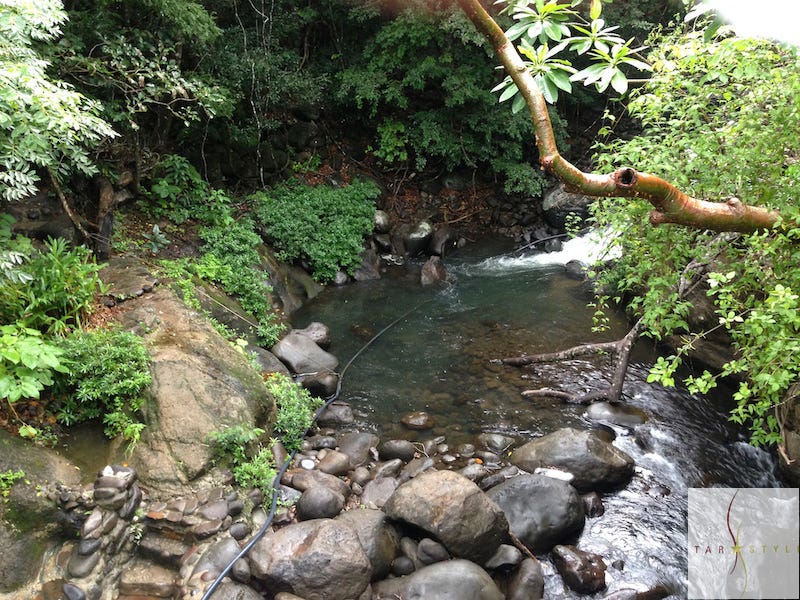
Gabions: Wire mesh boxes or baskets are filled with stones to stabilize slopes and creek banks as the water flows through them reducing flooding.
Terracing: On steep slopes, using rocks and stones for terracing reduces soil loss.

Retaining Walls: To prevent mudslides and flooding, retaining walls made of rocks are beautiful as well as effective.
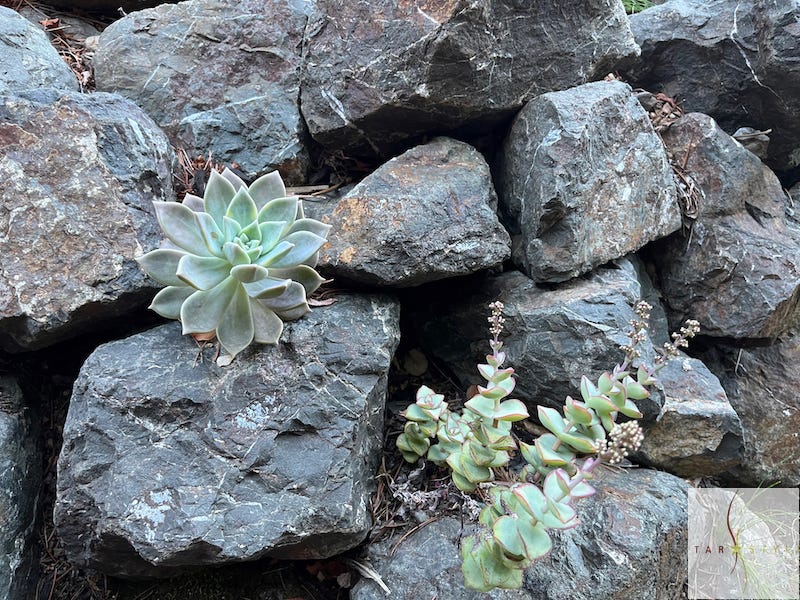
Rock Gardens: Adding well-placed boulders in a garden creates an aesthetically pleasing landscape while also retaining soil stability.
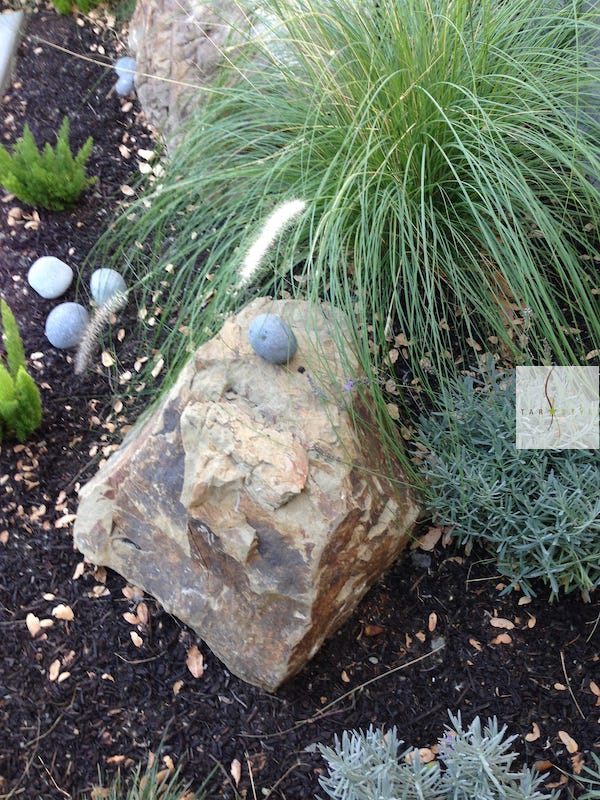
Pathways: For improved accessibility that adds a much-wanted decorative element to the environment, add pathways with stepping stones along creek banks and hillsides.
Habitat: Strategically placed rocks in creeks create habitats and shelters for pollywogs, frogs, turtles, fish, salamanders, and other aquatic species. On hillsides, rocks provide hiding places for terrestrial wildlife.

Before embarking on any erosion plan for your creek or hillside, consult with experts and local authorities to ensure the correct methods for your project. You want the result to be environmentally friendly and ecologically effective. Local regulations and permits may be required, especially when working with bodies of water or hillside landslide areas. Once you’ve completed the rock work, make sure to add plenty of plants to complete the design and make the area aesthetically pleasing.
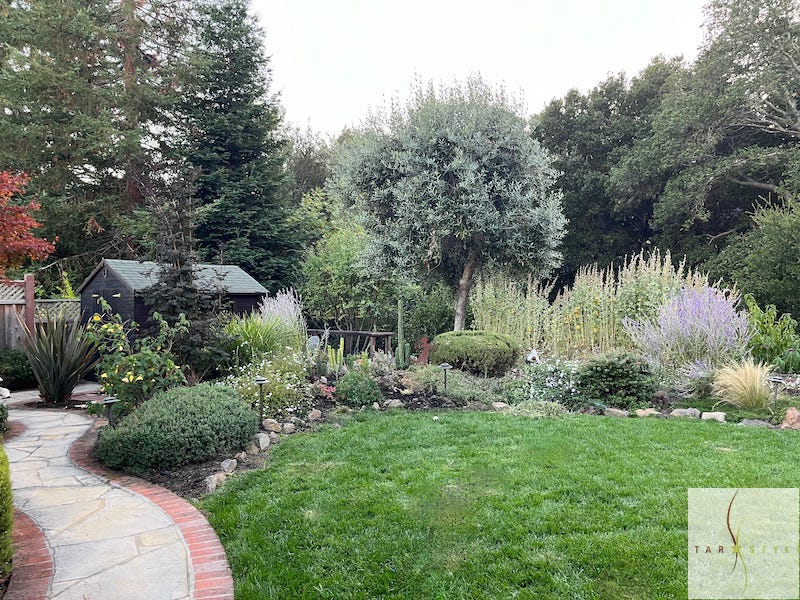
Cynthia Brian’s Gardening Guide for Mid-October
- BOOST your levels of vitamin C before flu and cold season begins by brewing a homegrown rose hip, sage, and peppercorn tea. Pick ripe red rose hips from your rose bushes and red peppercorns from your pepper tree. Smash or grind and add to a teapot with shaved ginger, lemon rind, lemon juice, sage leaves, and honey. Peppery and delicious, hot or iced. Substitute garlic for the honey for a zesty herbal broth yummy with steamed vegetables.
- AVOID pruning hydrangeas that bloom on old wood as you won’t have flowers the following year or more.
- FERTILIZE and aerate lawns this month.
- PRUNE shrubs and overgrown branches.
- CLEAR gutters and drainage lines of leaves and debris.
- PROVIDE food and water for our migrating birds.

- PLANT cool season vegetables including kale, lettuce, arugula, and broccoli.
- PROTECT sensitive plants by covering them with burlap or bringing them indoors.
- APPLY a layer of mulch to garden beds to retain moisture and regulate soil temperature.
- FILL cracks in the driveway or garden paths to prevent further cracking.
- APPLY snail bait around plants susceptible to snail and slug damage.
- TREAT for aphids with a spray of water mixed with dishwashing detergent.
- RAKE fallen leaves to add to the compost pile or make a mulch.
- GREEN TOMATOES? Here’s a tip for rapid ripening from reader Sally F. “In late fall, cut tomato vine at the base and hang upside down in a dry place, such as a garage or shed, with newspaper or cardboard underneath to catch any falling tomatoes. Tomatoes will ripen from the nearest stem base.”

Happy Gardening! Happy Growing.
For more gardening advice for all seasons, check out Growing with the Goddess Gardener at https://www.CynthiaBrian.com/books. Raised in the vineyards of Napa County, Cynthia Brian is a New York Times best-selling author, actor, radio personality, speaker, media and writing coach as well as the Founder and Executive Director of Be the Star You Are!® 501 c3. Tune into Cynthia’s StarStyle® Radio Broadcast at www.StarStyleRadio.com. Her newest children’s picture book, Family Forever, from the series, Stella Bella’s Barnyard Adventures is available now at https://www.CynthiaBrian.com/online-store. Hire Cynthia for writing projects, garden consults, and inspirational lectures. Cynthia@GoddessGardener.com

Read Rock It: https://cynthiabrian.substack.com/p/rock-it
Read Lamorinda Weekly: https://lamorindaweekly.com/archive/issue1718/Digging-Deep-with-Goddess-Gardener-Cynthia-Brian-Rock-solid.html
Listen to Cynthia talk about creek gardening on StarStyle® Radio: https://www.voiceamerica.com/episode/147072/creek-gardening-mortgages-serial-entrepreneurship





